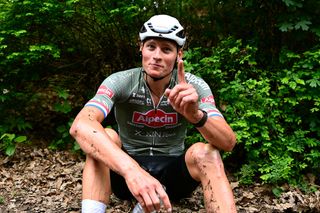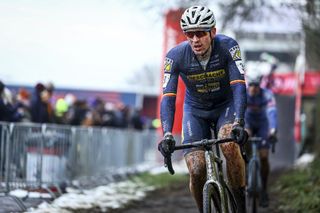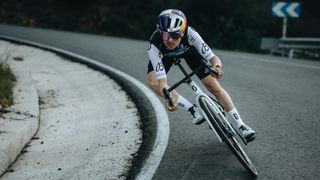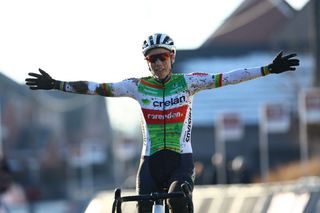E3 Prijs opens Flemish Week
First tough test for the cobblestone Classics
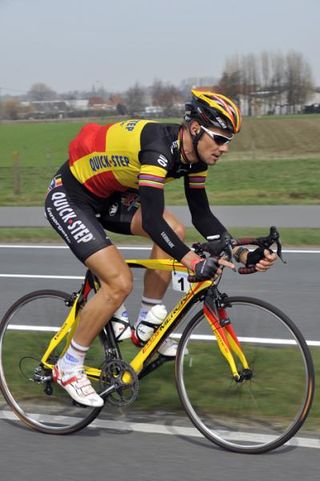
The Flemish Week opens on Saturday with the E3 Prijs Vlaanderen. The race is traditionally the warm-up for the Tour of Flanders eight days later.
The 210 kilometre route, which starts and ends in Harelbeke, features 12 ‘hellingen’, the short but steep climbs so typical of this region. The Kapelberg, with 45 kilometres to go, has a gradient of 14 per cent. The climbs are gathered in the last 84 kilometres of the race, with the last one, the Tiegemberg, coming only 17 kilometres before the finish line.
Top favourite for the race, as so often, will be Quick Step's Tom Boonen, who won here from 2004 to 2007. Last year, however, he was out-sprinted by Katusha's Filippo Pozzato, who will be at the start to defend his title. In 2009, the two were in a three-man group which got away on the Knokteberg climb with 25 kilometres to go, and were able to hold on to a 45 second lead to the end. The third man in the group was Maxim Iglinsky, whose Astana team was not invited this year.
Boonen is not the only arrow in Quick Step's quiver. Both Sylvain Chavanel and Stijn Devolder, who finished in the top ten last year, will be there again.
Rabobank is sending a strong team too, with Lars Boom, Sebastian Langeveld (ninth last year) and Nick Nuyens (seventh in 2009). Team Sky's Edvald Boasson Hagen is doubtful for the race, suffering from an inflamed Achilles tendon, but Juan Antonio Flecha and 2008 winner Kurt-Asle Arvesen, returning from a broken collarbone in the Tour of Qatar, will be there to take up the slack if needed.
Saxo Bank's Fabian Cancellara is always a threat, and BMC Racing Team is sending a strong squad, with former world champion Alessandro Ballan and Marcus Burghardt, always a threat in the Classics.
The course profile
The course is a series of loops, flat for the first 126 kilometres, as the race travels east. The first climb comes near the end of the largest, eastern-most loop, La Houppe, a long climb of 2,800 metres but only a 3.3 per cent average gradient. Then five more ‘hellingen’ follow in the next 18 km, including the Taaienberg, with its 9,5 per cent gradient, and a maximum of 18 per cent.
But the race, which is expected to be held in rain, also features cobblestones on many of those climbs. The Eikenberg, at km 136, has 1,000 metres of cobbles, as do a total of five other of the climbs.
After the first six climbs, the riders have a short break on their way back west before hitting the next cluster of climbs. Another four come within 13 kilometres, three of them featuring cobblestones. At kilometre 158, the Kapelberg has a gradient of up to 14 per cent, while the Paterberg, only 4 kilometres later, has 400 metres of cobblestones, and a gradient up to 14 per cent. If that's not enough, the next climb, the Kwaremont has a milder maximum gradient of 11 per cent but 1,500 metres of cobblestones.
From there, there are only two more climbs on the way to the finish, both longer but with a lower gradient. After hitting the top of the Tiegemberg, the peloton – or a group of escapees – will have only a 17 kilometre dash into the finish.
Get The Leadout Newsletter
The latest race content, interviews, features, reviews and expert buying guides, direct to your inbox!
Most Popular
Latest on Cyclingnews
-
'Negotiations open with some big riders' - Mathieu van der Poel could be surprise 2025 Giro d'Italia stage hunter
Race director Mauro Vegni accepts that Tadej Pogačar and Jonas Vingegaad are not expected to ride the Corsa Rosa -
Toon Aerts wins Cyclocross Otegem in closing sprint
Belgian beats Laurens Sweeck and Joran Wyseure to victory -
Here's Tom Pidcock's new team bike for 2025, and here's why we don't think he'll use it
While the new Scott Addict RC Ultimate is impressively light, the Scott Foil is so aero we suspect it will be reserved for the high mountains only -
Sanne Cant takes solo victory at Cyclocross Otegem
Belgian beats Aniek van Alphen and Marion Norbert Riberolle to the win

